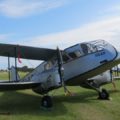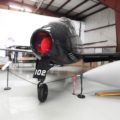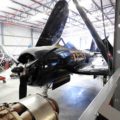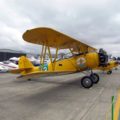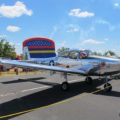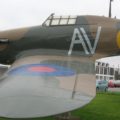
LVG C.VI | |
|---|---|
| 国 | ドイツ |
| 役割 | 偵察機 |
| 初飛行 | 1917 |
| 構築 | 1100+ |
ザ LVG C.VI ●第一次世界大戦中に使用されたドイツの2人乗り偵察機と砲兵スポッティング機でした。
ソース: ウィキペディアで LVG C.VI
| LVG C.VI Walk Around | |
|---|---|
| カメラマン | Unknow |
| ローカライズ | 知りません |
| 写真 | 43 |
関連項目:
text は、 LVG C.VI は、第一次世界大戦中にドイツの会社Luft-Verkehrs-Gesellschaft(LVG)によって開発および製造された複座の偵察および砲兵偵察機でした。以前のLVG C.Vモデルをベースにしていましたが、より小型で軽量なデザインで、より優れた空力特性を備えていました。LVG C.VI は、合板で覆われたセミモノコックの胴体を備えた木製と金属製の複葉機構造でした。動力源はベンツBz.IVエンジン1基で、2枚羽根の木製プロペラを駆動していました。航空機は、後部スキッドと上部翼に水ラジエーターを備えた固定着陸装置を備えていました。乗組員はパイロットとオブザーバーで構成され、無線送信機、パラシュート、暖房付き飛行服にアクセスできました。LVG C.VI は固定式機関銃と可動式機関銃1丁で武装し、最大90kgの爆弾を搭載することができた。
LVG C.VI は1918年に就役し、主に西部戦線でドイツ空軍によって近接偵察および観測任務に使用されました。戦後、ポーランド、フィンランド、リトアニア、チェコスロバキア、スイス、ソビエト連邦などの他の国でも使用されました。一部の航空機はラーブ・カッツェンシュタインによってLVG P.I、P.II、RK-8 マラブとして旅客機に改造された。LVG C.VI は、戦争中に大量生産された最後のドイツの2人乗り航空機の1つであり、約1,100機が製造されました。現在、現存するLVG C.VIは3台のみで、イギリス、ベルギー、フランスの博物館に展示されています。
閲覧数: 1343



